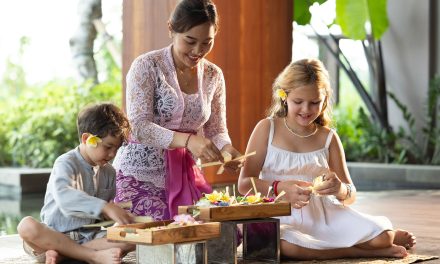Kuta, a lively beach town in Bali, Indonesia, is not just known for its surf and sun; it’s also a vibrant hub for cultural expressions, especially through dance. When I first stumbled upon the Kuta traditional dance during a cultural festival a few years ago, I didn’t think much of it. I was simply there to enjoy a vacation, but what I encountered was a captivating celebration of heritage that I’ll never forget. Let’s dive deeper into Kuta’s traditional dance, its significance during cultural festivals, and share some personal anecdotes that highlight its essence.
The Heartbeat of Culture
Kuta traditional dance isn’t merely entertainment; it’s a tapestry of history, belief, and community spirit. As I watched the dancers perform under the setting sun, the rhythmic beating of the gamelan – a traditional Balinese orchestra featuring gongs and wooden instruments – resonated in my chest like the heartbeat of the island itself. Each movement told a story of the past, embodying the shared traditions of the Balinese people.
The dances often depict scenes from Hindu epics like the *Ramayana* or *Mahabharata*. One such notable performance that I had the opportunity to witness was the *Kecak dance*, characterized by a chorus of chanting men whose rhythm punctuated the dramatic storytelling around themes of love, betrayal, and divine intervention. I vividly remember the feeling of goosebumps when the lead dancer, painted in intricate ornaments, made his entrance, captivating the audience with each sway of his arm and each step.
Getting Involved: A Personal Journey
During my time in Kuta, I found myself not just observing but immersing in the culture. Intrigued by the various forms of dance, I decided to take part in a community workshop organized by local artists as part of the festival. Trust me, participating is far more rewarding than just being a spectator! I wore a traditional costume, adorned with colorful sashes and jewelry, and for a moment, I felt like I belonged.
Learning the *Legong dance*, known for its graceful movements and intricate hand gestures, was challenging yet exhilarating. I remember the laughter and camaraderie of my fellow workshop participants, many of whom were tourists like me, eager to learn the art form. This shared experience not only made for a fun afternoon but allowed me to connect with Balinese culture on a deeper level.
Festivals: A Celebration of Identity
Cultural festivals in Kuta, such as the Kuta Festival held annually, showcase various performances, food stalls, and art exhibitions that reflect the rich Balinese heritage. During my visit, the streets were filled with vibrant decorations, the air scented with traditional Balinese dishes, and music that made my heart dance in delight. It was a feast for the senses.
I attended several performances where dancers, with their faces adorned in elaborate makeup, moved intensely yet gracefully, transporting everyone into a world of mythical stories. Families gathered in delight, and children imitated the dancers with innocent giggles, highlighting the importance of passing on these cultural traditions to future generations. This scene reminded me of my own childhood experiences where my family celebrated local traditions—it was as if I had found a sense of nostalgia amidst the tropical paradise.
Practical Tips for Enjoying Kuta Traditional Dance
If you’re planning to experience Kuta traditional dance during cultural festivals, here are some practical tips that might enrich your visit:
1. Check the Festival Schedule: Many cultural festivals occur throughout the year, so it’s best to check local tourism websites for dates and specific events. The *Kuta Festival* generally takes place in October, making it an ideal time to visit.
2. Arrive Early: Finding a good spot to watch the performances is essential. Arriving early allows you to soak in the ambiance and perhaps even grab a bite of the delicious street food!
3. Participate in Workshops: If you have the chance, sign up for a dance workshop. Not only will you learn something new, but you’ll also interact with locals and other travelers, making your experience more enriching.
4. Ask Questions: The dancers, artists, and locals are usually very welcoming and open to sharing their stories about the dances. Don’t hesitate to ask questions – it’s a great way to learn!
5. Respect the Culture: Always be mindful of the cultural significance of what you’re witnessing. Dress respectfully if attending a performance in a temple, and maintain a reverence for the traditions being showcased.
Conclusion
Kuta’s traditional dance is a beautiful representation of Bali’s cultural identity, especially during cultural festivals. As I reflect on my experience, I am reminded of the warmth and hospitality of the Balinese people, who invite visitors to share in their rich heritage. So if you’re ever in Kuta, don’t just sit back and watch – become a part of the dance, engage with the culture, and create unforgettable memories. Whether through watching performances or participating in the festivities, you’ll find yourself enchanted by the magic of Kuta traditional dance.






